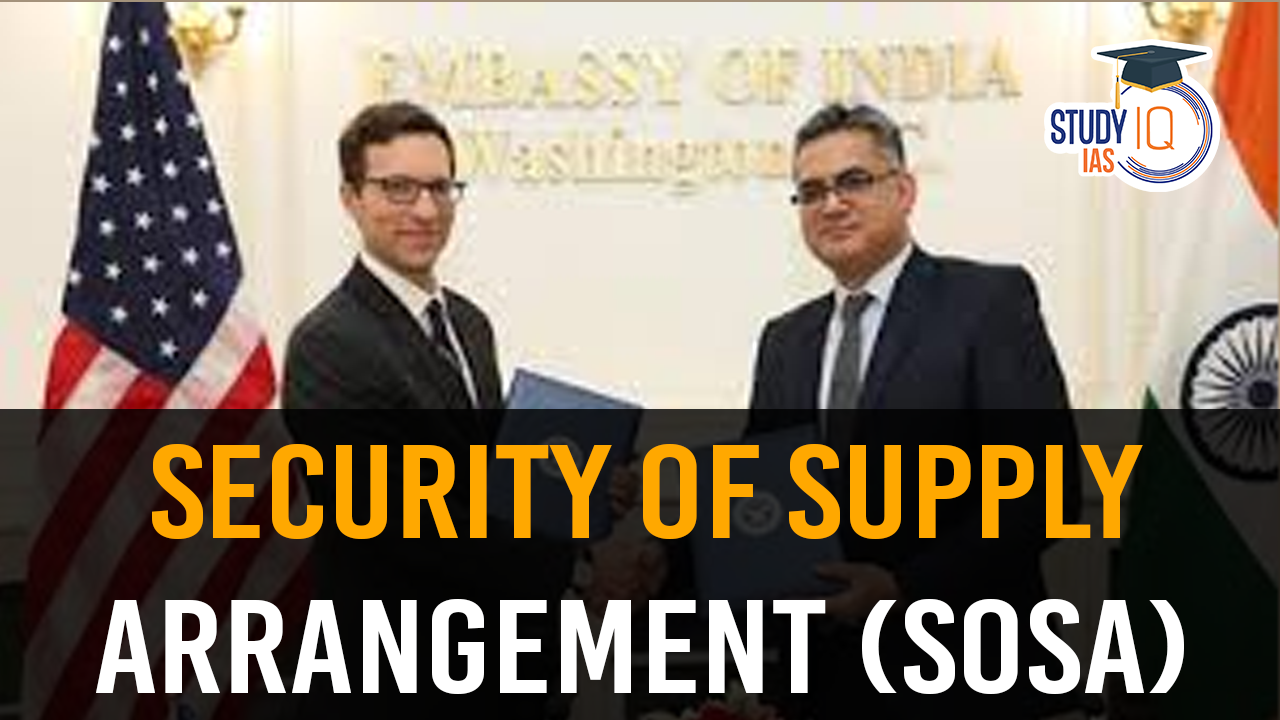Table of Contents
The Security of Supply Arrangement (SOSA) represents a pivotal development in international defense cooperation, marking a significant milestone in the strategic partnership between nations. Signed by India and the United States, this non-binding agreement aims to enhance mutual defense capabilities and ensure the uninterrupted supply of critical defense goods and services. This detailed guide delves into the nuances of SOSA, its strategic importance, and its implications for global defense partnerships.
What is SOSA?
The Security of Supply Arrangement (SOSA) is a bilateral agreement between two or more nations designed to ensure priority support for defense-related goods and services during peacetime, emergencies, or armed conflict. Unlike legally binding treaties, SOSA is a non-binding agreement that emphasizes mutual cooperation and priority access to defense resources.
Key Features of SOSA
- Priority Delivery: SOSA allows signatory nations to request and receive priority delivery of defense supplies. This ensures that critical resources are available even during times of high demand or supply chain disruptions.
- Reciprocal Support: The agreement mandates reciprocal support, meaning that both parties are committed to providing priority access to their respective defense industries. This mutual assistance strengthens the defense capabilities of both nations.
- Supply Chain Resilience: SOSA enhances the resilience of defense supply chains by facilitating the rapid acquisition of essential resources. This is crucial for maintaining operational readiness and addressing unforeseen disruptions.
Strategic Importance of SOSA
- Enhancing National Security:
- For India: SOSA ensures that India can quickly procure vital defense supplies from the US, bolstering its national security and defense readiness. This is particularly valuable in scenarios involving geopolitical tensions or conflicts with neighboring countries like China.
- For the US: The agreement provides the US with priority access to Indian defense resources, fostering a more robust defense partnership and enhancing interoperability between the two nations’ military systems.
- Strengthening Bilateral Relations:
- US-India Defense Cooperation: SOSA reflects the deepening strategic ties between India and the US. It reinforces their commitment to mutual defense and security objectives, particularly in the Indo-Pacific region where both nations face common challenges.
- Foundation for Future Agreements: The agreement sets the stage for more comprehensive and legally binding agreements, such as the Reciprocal Defense Procurement (RDP) agreement, further solidifying defense collaboration.
- Strategic Positioning:
- Global Influence: By joining the list of SOSA partners, India positions itself as a key player in the global defense landscape. This affiliation with a major defense partner like the US enhances India’s strategic positioning on the world stage.
How SOSA Works
- Operational Mechanisms:
- Request and Priority: Signatory nations can request priority delivery for defense contracts, subcontracts, or orders. This ensures that essential resources are allocated based on immediate national defense needs.
- Government-Industry Code of Conduct: SOSA requires participating countries to establish a government-industry code of conduct. This voluntary arrangement signifies a commitment to prioritize defense support and maintain reliable supply chains.
- Implementation and Monitoring:
- Working Groups: SOSA institutes working groups and communication mechanisms to streamline processes and address potential supply chain issues proactively.
- Streamlining Processes: The agreement helps simplify the procurement and delivery processes, making it easier for defense contractors to meet urgent requirements.
Benefits of SOSA
- Enhanced Defense Readiness:
- Operational Efficiency: SOSA ensures that defense forces have timely access to necessary resources, enhancing their operational efficiency and readiness.
- Rapid Response: The ability to quickly procure critical supplies allows for a more agile response to emerging threats and challenges.
- Economic Advantages:
- Industrial Cooperation: By fostering closer industry cooperation, SOSA opens up opportunities for defense manufacturers and suppliers in both countries, driving economic growth and technological innovation.
- Market Access: The agreement provides Indian firms with access to US defense contracts and vice versa, expanding their market reach and fostering growth in the defense sector.
- Strategic Partnerships:
- Building Alliances: SOSA strengthens strategic partnerships and fosters deeper cooperation between allied nations. This collaborative approach enhances collective security and stability.
Conclusion
The Security of Supply Arrangement (SOSA) represents a significant advancement in international defense cooperation, offering strategic benefits to signatory nations. For India and the US, SOSA not only enhances mutual defense capabilities but also strengthens bilateral relations and positions both countries as key players in the global defense arena. As the agreement evolves, it sets the stage for deeper collaboration and more comprehensive defense partnerships, contributing to a more secure and stable global environment.


 Utkal Divas 2025: Odisha Foundation Day ...
Utkal Divas 2025: Odisha Foundation Day ...
 List of Military Exercises of India 2024...
List of Military Exercises of India 2024...
 GPS Spoofing and Its Impact in India: A ...
GPS Spoofing and Its Impact in India: A ...





















